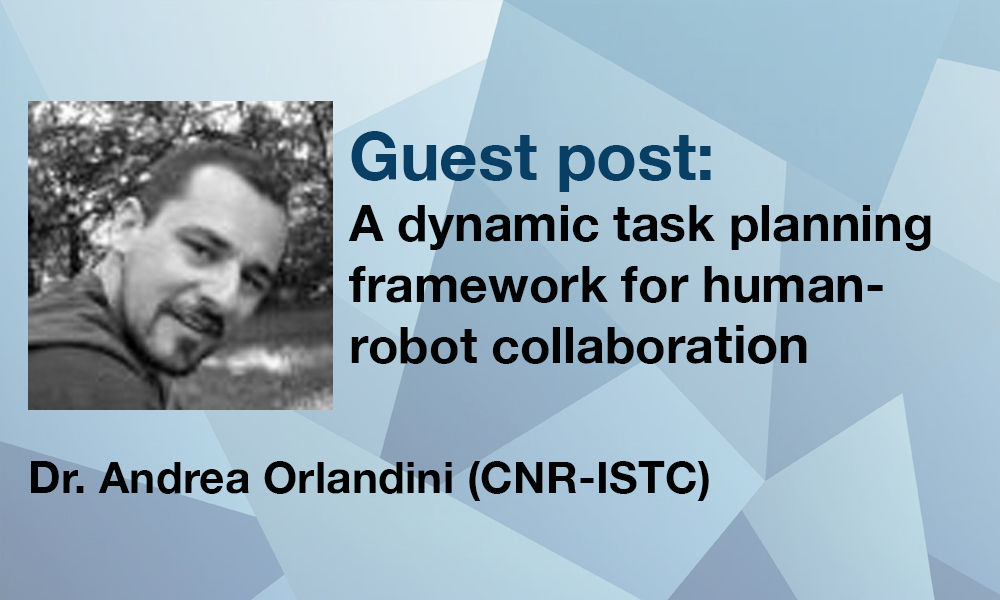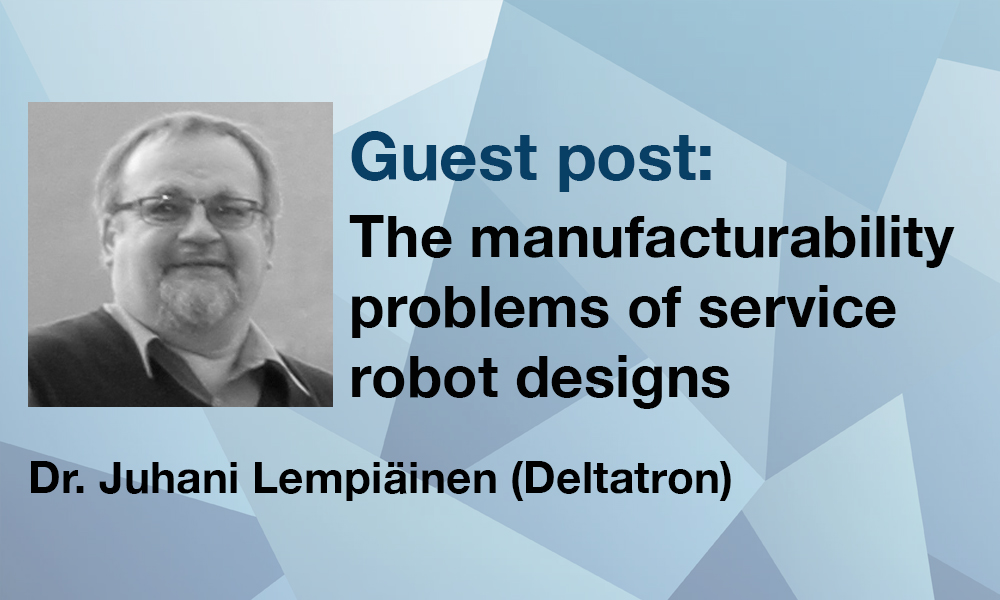Machining companies are busier than ever. The sector is doing well. Smart Industry or Industry 4.0 is creating major changes in the industry. More and more production is coming back to the Netherlands. It was previously attractive to produce,
Tag Archives: guest post
A Dynamic Task Planning Framework for Human-Robot Collaboration
The diffusion of lightweight robots is widening the opportunities of their use in manufacturing cells. In particular, the hardware adaptability to different operative conditions enables new challenging scenarios like, for example, those of co-presence of
The manufacturability problems of service robot designs
Service robots are having enormous variability with their tasks. One thing is common with all of them: they are present in the vicinity and interact with humans. This presence and co-operation capability dictates the design of the robot arm, which is very different compared to the industrial robot designs. The robot arm should be very light-weight so that inertia while moving will be minimized and the possible impact in case …Read More
Voice and gesture-based semantic interaction
In the factories of the future, achieving safe and flexible cooperation between robots and human operators will contribute to enhancing productivity. The problem of robots performing tasks in collaboration with humans poses the following main challenges: robots must be able to perform tasks in complex, unstructured environments and, at the same time, they must be able to interact naturally with the workers they are collaborating with, while guaranteeing safety all …Read More
Low-level and high-level control for a safe cobot
Emerging technology in human robot collaboration (HRC) has transported dreams into reality, particularly in the arena of smart lightweight robots that are transforming the lives of individuals with mobility issues, and improving the quality of daily work in many application scenario. Direct, physical interaction between a human and a robot has potential to provide assistance (as well as rehabilitation) which can extend the human user’s physical capabilities. FourByThree represents a …Read More
Designing a new generation of modular, flexible and collaborative robots
Through several decades of research new opportunities have emerged in automation engineering. These opportunities have led to new robotic and assistive systems that are used to arrange a clear and concise workflow for employees. These systems are used to provide important information to the operator or to aid them in the tasks of acting, sensing, and deciding. Concomitant with current market conditions, the degree of automation has been increasing. However, …Read More
ISO/TS 15066. New safety requirements for a new era of industrial robots
Industrial robots have changed many of their characteristics during these last years, enabling the evolution of the automation technology, from the typical robotic applications where the robot is fully surrounded by a peripheral fence system, to the most advanced “cobots” available in the market. Today we can find robots working hand in hand with the operator to carry out manual tasks. In order to achieve such direct cooperation between human …Read More
Workhop at IROS 2015: recap and lessons learned
The FourByThree project has the ambitious aim of combining different modalities and innovations achieved within the context of safe human-robot interaction in the latest worldwide robotics research and providing a unified solution for industrial applications. The proposed robotic solution will be a modular system that can be easily customised to fit the end-user’s particular needs, it will be easy to programme and intuitive to use and most importantly, it will …Read More
Projection-based interaction and safeguarding
The future of industrial manufacturing and production requires highly flexible work cells that are able to combine automation with tasks traditionally done manually. But such cooperation between humans and robots in close proximity requires the safeguarding of the human at all times. As traditional safety systems like fences, laser scanners, or pressure sensitive mats are too cumbersome or not applicable for these scenarios, we have noticed a lot of development …Read More
Origins and Status of the FourByThree Actuators
As it is the case in many projects, the initial idea for the FourByThree project came from a brainstorming discussion, in this case, between the project coordinator Iñaki (Ik4-TEKNIKER) and myself. I mentioned that we had just recently developed a new generation of actuators (see Fig. 1) for our exoskeleton in the frame of the project CAPIO (funded by the German Federal Ministry of Research and Education, BMBF, from 01.01.2011 …Read More











